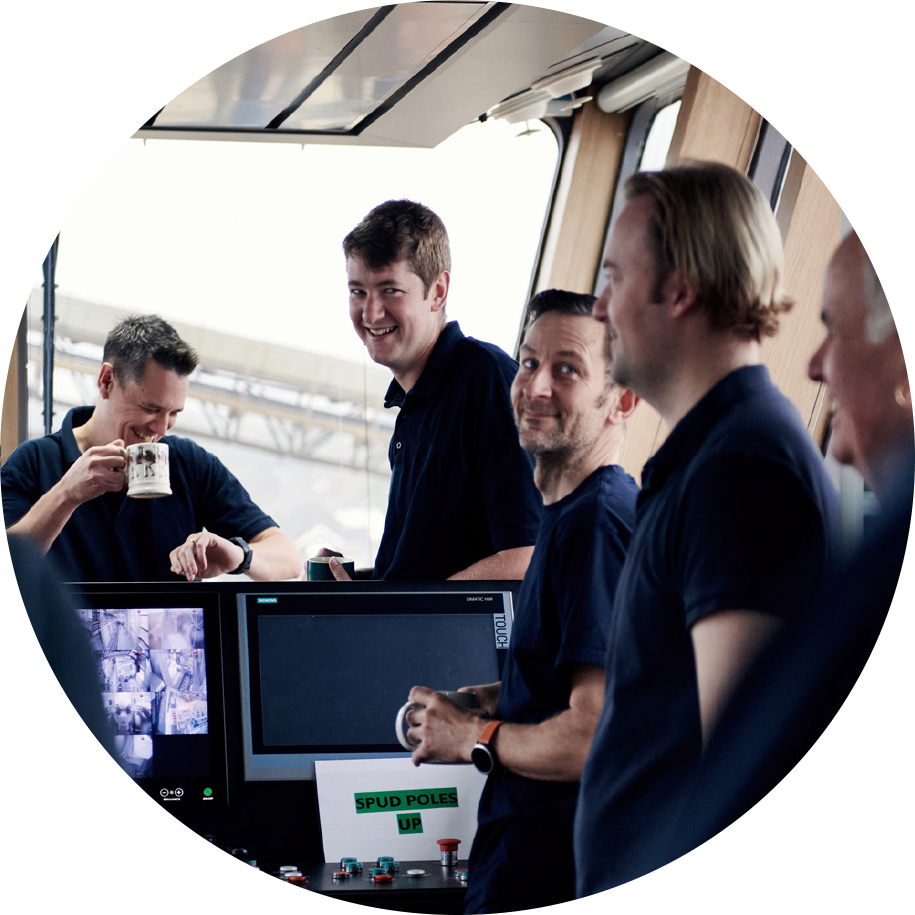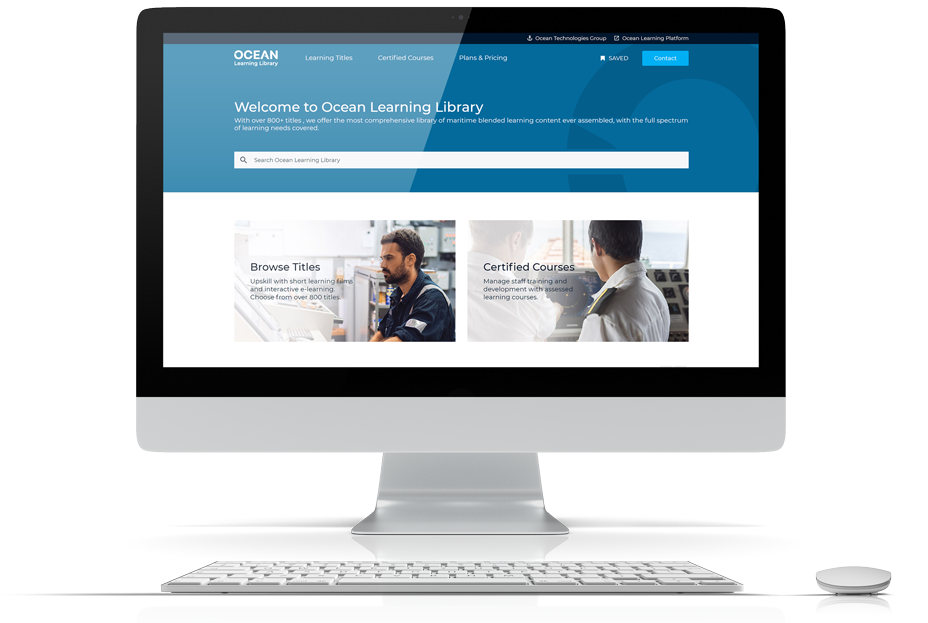New Fuels and Digitalisation in Maritime
Decarbonising our future
New technology will play a huge role in meeting the IMO’s 2050 goals, but people, processes, and ways of working will be the foundation on which a sustainable future is built.
Emerging New Fuels
The maritime industry is exploring a wide range of new, eco-friendly fuels to reduce its impact on the environment and meet global targets for cutting down greenhouse gas emissions.
Along with well-known alternatives like bio-methanol and bio-based natural gas, there’s a push towards other innovative fuels. These include ‘blue’ fuels made from natural gas with carbon capture technology, biofuels from renewable sources like plants and waste, and electrofuels created using renewable electricity and elements like carbon or nitrogen. [1]
These innovative fuels are crucial for the industry’s goal to eliminate emissions. Some, like biogas, are already being used, while others, such as hydrogen and ammonia, are in the testing phase or being showcased in pilot projects. For example, the world’s first ferry powered by liquid hydrogen has already been launched, marking a significant step forward. Ongoing research and development of other new technologies, such as onboard carbon capture and storage, alongside the continual improvement of scrubber technology, plays a significant role in the industry’s decarbonisation journey. These changes are all part of a wider move to ensure that all types of fuels used in shipping are evaluated for their entire lifecycle emissions, from production to use, as per the guidelines being developed by the International Maritime Organization (IMO).
This broadening of the fuel options highlights the industry’s proactive approach to finding various ways to achieve a sustainable, emission-free future, emphasising the need for ongoing innovation and collaboration to tackle the challenges of decarbonising maritime transport. [2] [3]
The World Bank has identified ammonia and hydrogen as especially promising zero-carbon bunker fuels, emphasising their potential role in the sector’s decarbonisation efforts. Ammonia, which can be produced through the electrolysis of water using renewable energy, followed by synthesis with nitrogen from the air, offers a sustainable pathway for maritime fuel. Hydrogen, recognised for its high energy density and zero-carbon emission profile during combustion, presents another viable option. [4]
However, integrating these new fuels into the maritime industry comes with its set of challenges. Issues such as how to produce, store, and handle these new fuels safely need to be addressed. Ammonia and hydrogen, for instance, have different properties compared to traditional fuels, requiring new storage solutions, bunkering facilities, and engine adaptations. Safety is another major concern, given ammonia’s toxicity and hydrogen’s flammability, necessitating updates to current safety standards and protocols. [5]
The transition to these sustainable marine fuels is a complex process that hinges not only on technological advancements but also on the development of a global supply chain capable of supporting their widespread adoption. Economic considerations, including the costs associated with these new fuels and the investments required for infrastructure development, will significantly influence their feasibility as alternatives to conventional marine fuels.

Digitalisation’s Role
Digitalisation is revolutionising the maritime industry, bringing in a wave of advanced technologies to boost efficiency, safety, and environmental sustainability. This shift is marked by a range of innovations designed to streamline operations at sea.
At the heart of the maritime industry’s push towards sustainability are advancements in energy efficiency and the adoption of new, cleaner fuels. Innovations in these areas are leading the charge in reducing the sector’s carbon footprint. While state-of-the-art navigation systems, data analytics, and sophisticated algorithms play a role in enhancing operational efficiency by optimising routes, it’s the breakthroughs in energy-saving technologies and alternative fuels that are the true game-changers in decarbonisation efforts.
These developments enable vessels to not only navigate more safely and efficiently but also significantly cut down on fuel consumption, making a direct impact on reducing greenhouse gas emissions.
In cargo tracking and fleet management, IoT devices and sensors have made it much easier to watch over cargo in real-time, making the supply chain more transparent and reliable. This level of visibility is especially important for companies like IKEA that are committed to decarbonising their supply chains. IKEA has set clear goals to become carbon neutral, with a target to be transporting “all of their goods on zero emissions trucks and vessels” by 2040. [6] To reach this goal, they are actively selecting suppliers and shippers that are also cutting down on their carbon emissions by using less energy and cleaner fuels. This approach is pushing the entire maritime industry to adopt greener practices and shows how large companies can lead the way in making supply chains better for the planet.
Fleet management software plays a vital role in improving the environmental impact of shipping. From a procurement and maintenance standpoint, digitalisation and the use of smarter tools enable companies to organise inventory and work schedules better to reduce the number of flights needed to get people or parts where they are needed. Improved planning also contributes to lowering operational costs and enhancing the performance of vessels.
Digital tools are also crucial as the industry moves towards greener fuel options. They enable the precise monitoring of fuel usage, help in improving fuel efficiency, and ensure that new fuels work well with existing ship systems. Techniques like data analytics and machine learning provide deep insights into how different fuels perform, helping ship operators make choices that are both environmentally friendly and in line with regulations. [7]
Training for New Fuels
The shift towards new fuels such as ammonia, methanol, and hydrogen is a direct response to the global push for decarbonisation and the IMO 2050 net-zero goals. [8] These fuels promise a cleaner alternative to traditional heavy fuel oil, but they also introduce new complexities in handling, storage, and propulsion systems. Training programs need to be updated urgently to include these new fuels, focusing on their unique properties, safety protocols, and environmental impacts. The maritime sector must ensure that seafarers are well-versed in the technical aspects of these alternative fuels to handle them safely and efficiently.
A recent study highlighted that nearly 87% of seafarers acknowledge the need for training on these new fuels. This indicates a significant gap in the current training frameworks, which must be addressed to prepare the workforce for these emerging energy sources. The training should not only cover the operational aspects but also the environmental and safety implications of using these fuels. [9]
Following this, there’s an emerging challenge where the pace of technological development in the maritime industry is surpassing the speed at which regulations can be updated. Traditionally, training programs have been structured around standards set by the IMO, ensuring a uniform global approach. However, when change and technology advance more rapidly than these standards can be revised, there’s a pressing need for alternate, interim measures to ensure safe operations.
In response, various industry associations and stakeholders have worked to create and adopt common standards for these new technologies. By establishing clear guidelines around best practice and what competence looks like, these standards help to promotion of safe and effective adoption of new technologies. Training must be developed at an equal pace to enable conformance with the new standards so that maritime professionals have the knowledge they need to conform to the standards.
Accessibility and Compliance
Key to complying with new standards will be upskilling crew with the information they need to understand and meet requirements. E-learning solutions enable rapid delivery of training exactly when and where it is needed. By combining in-person training with digital learning that makes use of diverse content formats, including simulation, training can be deployed faster and knowledge retention may be increased.
Furthermore, digital learning platforms offer the flexibility to rapidly update and deploy new training content, making it possible to quickly upskill crew members in response to emerging needs, such as a promotion or to close a competence gap highlighted by an incident. This agility ensures that maritime professionals can stay current with the latest industry standards and technologies, enhancing overall safety, compliance, and efficiency onboard. The ability to adapt training in real-time to meet immediate needs represents a significant advancement in ensuring that crews are always equipped with the knowledge and skills necessary for their roles.
Although the speed and availability of onboard connectivity continue to improve, we are not yet at a point where connectivity can be guaranteed. This reality underscores the need for reliable, offline-capable e-learning solutions for maritime compliance training. Ocean Learning Platform offers a seamless blend of online and offline, ensuring a consistent learning experience for seafarers regardless of location or internet availability. Whether they’re online, using the onboard installation, or learning on their mobile app, progress is synchronised back to the company office, providing a unified training experience.
In summary, as the maritime industry navigates through this era of digitalisation and decarbonisation, the focus must be on equipping its workforce with the necessary skills and knowledge. This requires a comprehensive overhaul of existing training programs to include new fuels and digital technologies, promoting a culture of continuous learning and collaboration across the industry.
When we invest in training and development, we’re not just investing in individuals; we’re investing in the future of the entire maritime industry, helping it stay competitive and safe as it moves forward with technological and environmental innovations [10]
If you would like to know more about how can help you, please
Contact us now!
The maritime industry’s best e-learning content
Unparalleled breadth and quality of content. We offer the most comprehensive library of maritime blended learning content ever assembled.

